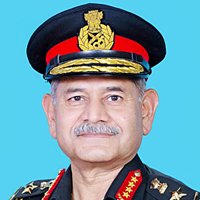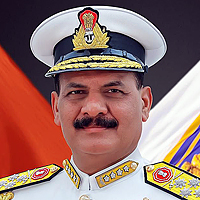INDIAN ARMED FORCES CHIEFS ON OUR RELENTLESS AND FOCUSED PUBLISHING EFFORTS

The insightful articles, inspiring narrations and analytical perspectives presented by the Editorial Team, establish an alluring connect with the reader. My compliments and best wishes to SP Guide Publications.

"Over the past 60 years, the growth of SP Guide Publications has mirrored the rising stature of Indian Navy. Its well-researched and informative magazines on Defence and Aerospace sector have served to shape an educated opinion of our military personnel, policy makers and the public alike. I wish SP's Publication team continued success, fair winds and following seas in all future endeavour!"

Since, its inception in 1964, SP Guide Publications has consistently demonstrated commitment to high-quality journalism in the aerospace and defence sectors, earning a well-deserved reputation as Asia's largest media house in this domain. I wish SP Guide Publications continued success in its pursuit of excellence.
- Indian Air Force Aims for Full Indigenous Inventory by 2047 — Air Chief Marshal A.P. Singh
- General Upendra Dwivedi takes over as the Chief of the Army Staff
- Rajnath Singh assumes charge as Defence Minister for the second consecutive term
- Admiral Dinesh K. Tripathi assumes Command of the Indian Navy as 26th Chief of the Naval Staff
- Prime Minister witnesses 'Bharat Shakti' – a Tri-Services Firing and Manoeuvre Exercise in Pokhran, Rajasthan
Safe and Secure Indian Cities: FICCI Ernst Young Report
There are five building blocks to secure a city’s safety – governance, planning, technology, resources and citizen awareness. Broadly, government, business and the public need to work together to strengthen and align the activities of the law enforcement agencies and the criminal justice system, states a report on “Homeland Security 2011 – Building Safe and Secure Indian Cities.”
The report presented jointly by the Federation of Indian Chambers of Commerce and Industry (FICCI) and Ernst & Young has outlined the way forward to secure the cities.
Under the governance category it has sought for reassessment of import duties on security-related equipment and techniques; devolution of powers with city government for formulation of local laws and enforcement; issuance of city surveillance, physical environment and building design guidelines; social development and welfare initiatives by urban local bodies; strengthening and modernisation of police forces; and promotion of private security agencies through appropriate policy changes.
In the resource category, it has stated that there was need to select forms of public-private partnerships for developing technologies needed for the Indian environment.
Under technology, it has sought deployment of video surveillance and command and control centres; central communication network that facilitates faster emergency response; and crime analysis and reporting through use of centralised databases, etc. From the citizen perspective, it has sought promotion of community policing and strengthening of citizen awareness programmes.
The report states the focus of a city’s security lies in the integration of the government, business and the public’s efforts to effectively offset and respond to threats. All three sectors need to work together to strengthen and align the activities of law enforcement agencies, emergency management services, urban planners, urban local bodies and citizens. Therefore, to make a city ready to respond to any eventuality, human or natural, departments need to be seamlessly integrated for effective delivery by the adoption of the latest technologies.
Constant unrest in the subcontinent, the influx of illegal immigration through the east and north because of porous littoral and land borders, the rise of factions due to caste/class rivalries, issues in the Northeast, Maoist insurgency throughout Central India and some serious terrorist attacks are the challenges facing the country. A combination of internal disturbances poses unprecedented challenges for India and makes imperative the formulation and implementation of an all-embracing security framework.
The FICCI Secretary General Dr Rajiv Kumar stated: “Major cities and towns, the key drivers for economic growth, are increasingly becoming the target for terrorist activity. Indian cities today have a fast growing, migratory population and divergent socioeconomic strata. Monitoring of activities related to homeland security is therefore a challenge. To keep city centres safe, protect public buildings, streets, public parks, and more importantly prevent potential crimes and violations, various security mechanisms should be deployed in towns and cities.”
Rahul Rishi, partner, advisory services, Ernst and Young, said: “The three most important factors that make a city an attractive place to live and work are job markets, city infrastructure and safety and security.”





